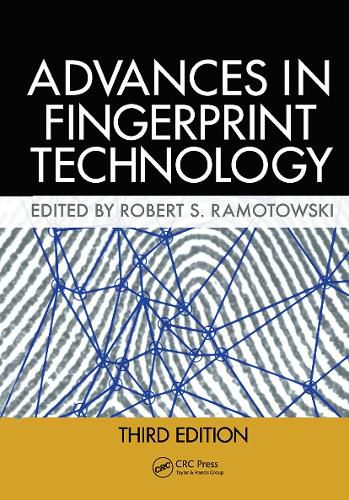Readings Newsletter
Become a Readings Member to make your shopping experience even easier.
Sign in or sign up for free!
You’re not far away from qualifying for FREE standard shipping within Australia
You’ve qualified for FREE standard shipping within Australia
The cart is loading…






Reflecting new discoveries in fingerprint science, Lee and Gaensslen’s Advances in Fingerprint Technology, Third Edition has been completely updated with new material and nearly double the references contained in the previous edition. The book begins with a detailed review of current, widely used development techniques, as well as some older, historical methods. Next, it describes more recent advances as well as novel, emerging technologies that have just begun to reach maturity.
Highlights in this edition include:
Comprehensive details about work performed by the UK Home Office on the use of powders and brushes
Advances in the area of blood reagents, and the transition from previously carcinogenic peroxidase reagents to new and safer protein staining methods
The vacuum metal deposition technique
The cyanoacrylate fuming process
An update on ninhydrin analogs
Emerging trends in print development using nanotechnology
Latent print recovery and decontamination at scenes tainted by chemical, biological, radiological, nuclear, and explosive materials
A model for quantitatively interpreting and assessing minutiae in a print
Methods for digital and chemical imaging of latent prints
With contributions by a renowned group of leading forensic scientists and criminalistics experts, this valuable work presents the latest progress in fingerprint technologies, comparison, and identification.
$9.00 standard shipping within Australia
FREE standard shipping within Australia for orders over $100.00
Express & International shipping calculated at checkout
Stock availability can be subject to change without notice. We recommend calling the shop or contacting our online team to check availability of low stock items. Please see our Shopping Online page for more details.
Reflecting new discoveries in fingerprint science, Lee and Gaensslen’s Advances in Fingerprint Technology, Third Edition has been completely updated with new material and nearly double the references contained in the previous edition. The book begins with a detailed review of current, widely used development techniques, as well as some older, historical methods. Next, it describes more recent advances as well as novel, emerging technologies that have just begun to reach maturity.
Highlights in this edition include:
Comprehensive details about work performed by the UK Home Office on the use of powders and brushes
Advances in the area of blood reagents, and the transition from previously carcinogenic peroxidase reagents to new and safer protein staining methods
The vacuum metal deposition technique
The cyanoacrylate fuming process
An update on ninhydrin analogs
Emerging trends in print development using nanotechnology
Latent print recovery and decontamination at scenes tainted by chemical, biological, radiological, nuclear, and explosive materials
A model for quantitatively interpreting and assessing minutiae in a print
Methods for digital and chemical imaging of latent prints
With contributions by a renowned group of leading forensic scientists and criminalistics experts, this valuable work presents the latest progress in fingerprint technologies, comparison, and identification.